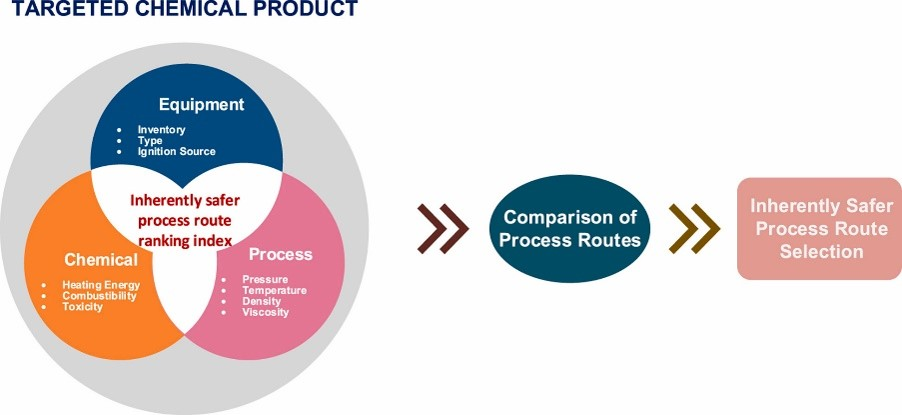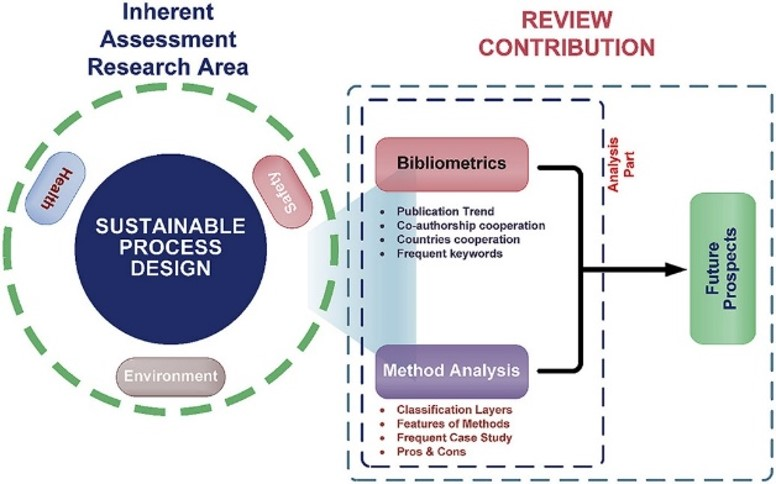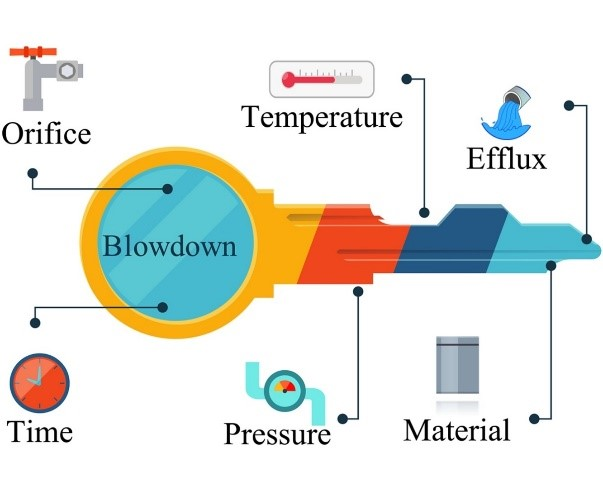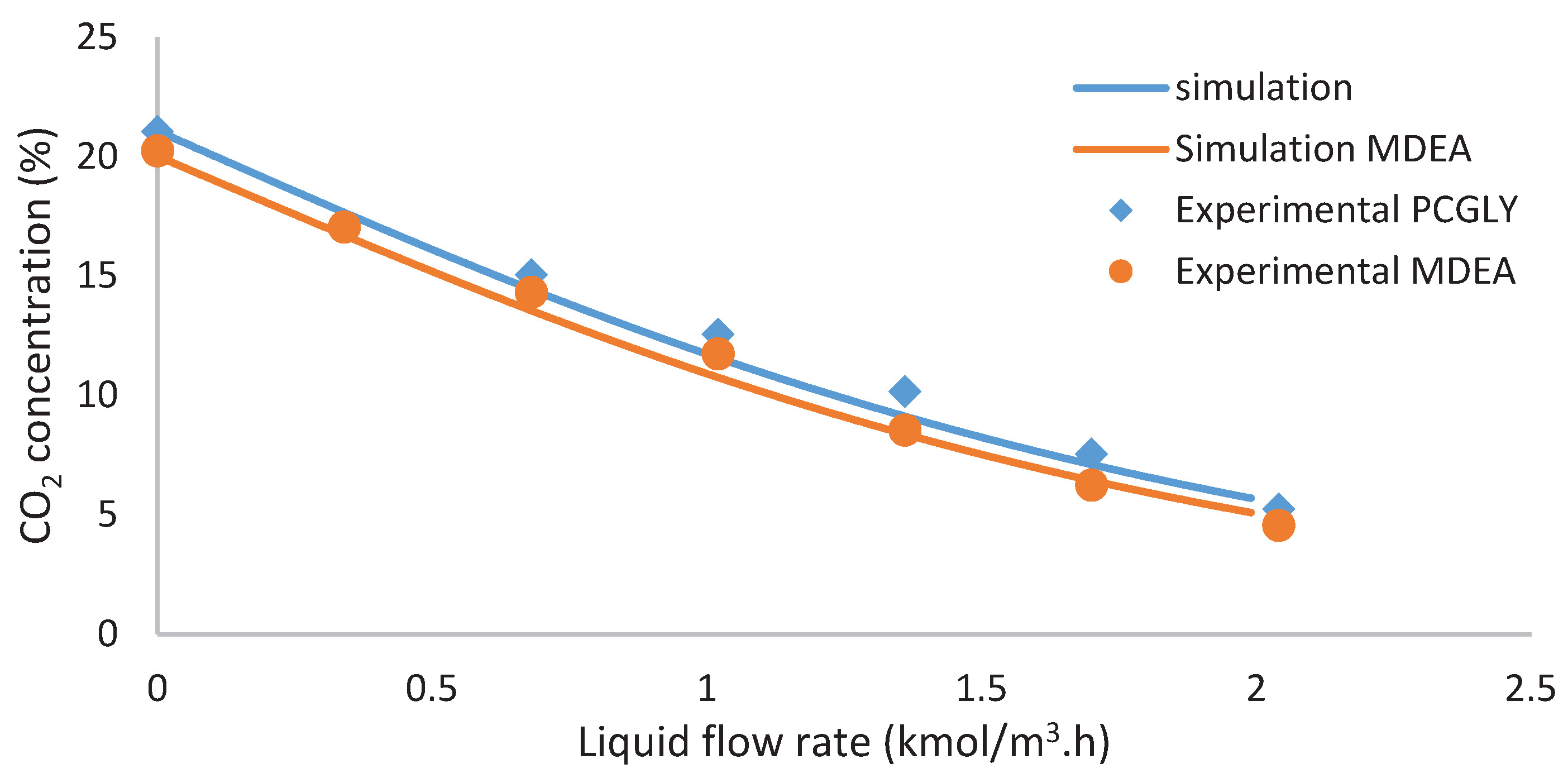Research Success Stories
The growth of process industries has escalated the probability of loss containment scenarios of hazardous ma terials that can be tackled via process safety schemes. For preliminary design stage, the inherent scheme is more promising to generate sustainable process designs. For this purpose, various process routes are typically compared to recognize the safer one via numerous indexing methods to eliminate routes with hazardous ma terials. However, these indices lack in accommodating the equipment characteristics and the underutilization of process and chemical characteristics. Specifically for chemical characteristics, the toxicity aspect has not been engaged for process route selection in conjuction with other aspects. Consequently, an advanced indexing method is consolidated in the present work for the mentioned gaps named as inherently safer process route ranking index (ISPRRI). This method utilizes the equipment, chemical, and process aspects for ranking purposes. MMA process routes have been studied with the proposed method, and the obtained results validate the appli cability to identify the less hazardous route and are in agreement with previous indices. The technique would facilitate the design engineers to rigorously compare the process routes to highlight the inherently safer route with less hazardous materials for the desired chemical product.
Posted on: December 2022
Authored: Azmi Shariff
Chemical process manufacturing is associated with risks, which cannot be eliminated. Anyhow, controlling or minimizing of risks is possible up to a certain extent through various process safety strategies. Among these strategies, the inherent approach offers a sustainable process design. This review aims to offer an extensive survey regarding the bibliometrics and the features of the state-of-the-art inherent assessment methods. For the bibliometric part, numerous trends like publication trend, authors and geographical cooperation and prominent keywords are presented using the VOSviewer software. For the second intention, the scope and features of inherent assessments methods for sustainable process design are discussed in addition to the historical development of these methods. The techniques are categorized among seven groups based on the method adopted for inherent assessment along with the benefits and detriments of each group. It is revealed that initially, the inherent assessment has focused on the comparison of various process routes, whereas, the modern methods intend to minimize the risk. Furthermore, it is recognized that the process equipment approach is not much explored yet, which may improve the sustainable process designing via the equipment characteristics. Finally, the limitations of present schemes and future research directions for inherent assessment implications in the sustainable process design are also highlighted, such that the objectives of economic, healthier, safer and environmental-friendly process plants can be materialized.
Posted on: October 2019
Authored: Azmi Shariff
In process industry, failure or rupture of pressurized vessel is very dangerous especially when there is an escape of flammable gaseous mixture that can cause potential fire or explosion. One of the scenarios that causes such accidents is the blowdown process. Therefore, it becomes crucial to control blowdown process to prevent such accidents. It is important to design optimally to make sure that blowdown valve is according to the requirements. For the safe use of a pressure relief system, some of the parameters are critical, for example, selection of construction material, sizing of relief valves, temperature, and pressure, etc. There is no literature currently available that discusses all the mathematical models or simulation tools for optimum design of the blowdown process. This subject matters because the available models or tools cover different aspects of blowdown process. A meticulous review is required to present the applications of these models and tools based on the accidental scenarios. Therefore, this paper critically reviews the models and tools that are developed purposely to calculate optimum blowdown parameters based on fluid and vessel conditions. Recommendations are given for the development of new simulation tool to simulate phase change conditions especially when solid formation is involved.
Posted on: January 2020
Authored: Azmi Shariff
The removal of carbon dioxide (CO2) at offshore operation requires an absorption system with an environmentally friendly solvent that can operate at elevated pressure. Potassium carbonate promoted with glycine, PCGLY, is a green solvent that has potential for offshore applications. For high solvent concentrations at elevated pressure, the by-product of CO2 absorption consists of precipitates that increase operational difficulty. Therefore, this study was done to assess the CO2 absorption performance of non-precipitated PCGLY with concentration 15 wt% PC+3 wt% GLY, which is known to have comparable solubility performance with MDEA. A packed absorption column was used to identify the CO2 removal efficiency, mass transfer coefficient in liquid film, klae and overall volumetric mass transfer coefficient,KGav. A simplified rate-based model was used to determine klae and KGav based on the experimental data with a maximum MAE value, 0.057. The results showed that liquid flow rates and liquid temperature gives significant effects on the klae and KGav profile, whereas gas flow rate and operating pressure had little effect. The CO2 removal efficiency of PCGLY was found to be 77%, which was only 2% lower than 1.2 kmol/m3 MDEA. KGav of PCGLY is comparable with MDEA. The absorption process using PCGLY shows potential in the CO2 sweetening process at offshore.
Posted on: May 2021
Authored: Azmi Shariff
The growth of process industries has escalated the probability of loss containment scenarios of hazardous ma terials that can be tackled via process safety schemes. For preliminary design stage, the inherent scheme is more promising to generate sustainable process designs. For this purpose, various process routes are typically compared to recognize the safer one via numerous indexing methods to eliminate routes with hazardous ma terials. However, these indices lack in accommodating the equipment characteristics and the underutilization of process and chemical characteristics. Specifically for chemical characteristics, the toxicity aspect has not been engaged for process route selection in conjuction with other aspects. Consequently, an advanced indexing method is consolidated in the present work for the mentioned gaps named as inherently safer process route ranking index (ISPRRI). This method utilizes the equipment, chemical, and process aspects for ranking purposes. MMA process routes have been studied with the proposed method, and the obtained results validate the appli cability to identify the less hazardous route and are in agreement with previous indices. The technique would facilitate the design engineers to rigorously compare the process routes to highlight the inherently safer route with less hazardous materials for the desired chemical product.
Posted on: December 2022
Authored: Azmi Shariff
Novel or unconventional technologies are critical to providing cost-competitive natural gas supplies to meet rising demands and provide more opportunities to develop low-quality gas fields with high contaminants, including high carbon dioxide (CO2) fields. High nitrogen concentrations that reduce the heating value of gaseous products are typically associated with high CO2 fields. Consequently, removing nitrogen is essential for meeting customers' requirements. The intensification approach with a rotating packed bed (RPB) demonstrated considerable potential to remove nitrogen from natural gas under cryogenic conditions. Moreover, the process significantly reduces the equipment size compared to the conventional distillation column, thus making it more economical. The prediction model developed in this study employed artificial neural networks (ANN) based on data from in-house experiments due to a lack of available data. The ANN model is preferred as it offers easy processing of large amounts of data, even for more complex processes, compared to developing the first principal mathematical model, which requires numerous assumptions and might be associated with lumped components in the kinetic model. Backpropagation algorithms for ANN Lavenberg-Marquardt (LM), scaled conjugate gradient (SCG), and Bayesian regularisation (BR) were also utilised. Resultantly, the LM produced the best model for predicting nitrogen removal from natural gas compared to other ANN models with a layer size of nine, with a 99.56% regression (R2) and 0.0128 mean standard error (MSE).
Posted on: July 2023
Authored: Azmi Shariff




